Veronica longifolia is a beautiful medicinal plant for your garden
Beautiful plant - veronica - has more than three hundred species in nature. The most common is pectoral grass, or Veronica long-leaved.
Content:
- Description of the species and place of growth
- Reproduction of Veronica long-leaved
- Growing and care
- Medicinal properties and application in traditional medicine
Description of the species and place of growth
In forest glades, along the banks of rivers throughout Europe, as well as in Siberia and the Far East, this plant is found - long-leaved veronica. On an erect stem, sometimes reaching a height of one and a half meters, pointed lanceolate leaves are located on short petioles, often with jagged edges.
The top of the stem and branches is crowned with long inflorescences of blue, blue or purple tones, which are loose brushes, fluffy at the bottom, and narrowed at the top. The root of this perennial is long, creeping.
Veronica blooms from mid-summer to autumn.
In October, strong, slightly swollen capsules appear on the stems, consisting of two nests, in which small oval seeds hide. Veronica chooses swampy places in the forest among shrubs or steppe meadows as her favorite place for her growth, she especially prefers the banks of streams and canals. Flower veronica shape similar to inflorescences plantain, therefore, it belongs to the family of this medicinal plant.
Reproduction of Veronica long-leaved
Like most plants, Veronica longifolia reproduces in the following ways:
- Seeds sown in the autumn, and after 2 years the plant will delight flowering... The basic rule for growing Veronica long-leaved by sowing seeds is not to deepen them, but to simply lay them out on the surface of the soil. Covering the crops with polyethylene or glass, place the containers in the refrigerator, and then after 3 weeks put them in a warm place. Usually after 2 weeks shoots appear.
- Reproduction of Veronica easily occurs dividing the bush... You just need to separate the shoots with strong roots and plant them.
- But the most effective breeding method is grafting... Having cut off young shoots with one or two internodes in the first summer months, they are placed in a vessel with water or planted in the ground. Usually after 10 days they take root, and then you can choose a permanent place for them in the garden.
Thanks to different methods of reproduction, it is possible to turn this unique flower into a decorative one, which will decorate flower beds and rockeries, alpine slides, and help to strengthen the slopes. The ideal solution would be to use a perennial in combination with roses and phlox... And with white chamomile these bright blue flowers look pretty harmonious.
Growing and care
Wherever you plant Veronica in the garden, everywhere she will be in place. Many people prefer to plant it near reservoirs... But next to another flower, it looks great too.
The plant can grow on any soil, but preferably moist and light, neutral in composition.
Planting Veronica looks great in open sunny places, allows you to keep moisture in the ground, especially during dry periods. But the flower does not tolerate the cold, signs may appear on its leaves powdery mildew... You can use the planting of Veronica longifolia on lawns: it is resistant to trampling, unpretentious in care.
Basic requirements for flower growth:
- In dry summers, it is best to water the Veronica plantings abundantly.
- The main thing for this plant is light, although it can grow in partial shade. Lighting will only affect the brightness of the tone of the inflorescences.
- After the shoots have faded, they are cut off, because this will help the plant rejuvenate due to the new growth.
If you want to get a decorative flower on your site, and even one that benefits your health, then this is Veronica long-leaved. It grows in any conditions, does not require special attention to itself and pleases with the brightness of color, attracting bees to itself.
Medicinal properties and application in traditional medicine
Veronica longifolia is widely used in folk medicine:
- During flowering the stems of the plant are plucked and dried in a ventilated area. The prepared raw materials are insisted in boiling water (one teaspoon per glass of water) for no more than 2 hours. An infusion of dried herbs is used for colds, coughs, shortness of breath and tuberculosis. With angina, laryngitis is drunk four times a day and gargled with an infusion. No wonder the second name of the flower is breast grass or gourd.
- Possessing choleretic properties, the herb treats diseases associated with liver dysfunction. Healing infusion will help stop uterine bleeding, helps with diarrhea.
- After rubbing fresh flowers and leaves of Veronica, the resulting powder is used for sweating legs, diaper rash.
- A decoction of the aerial part of the plant can neutralize snake venom, it is effectively washed with wounds, since the flower contains substances that have a wound healing and anti-inflammatory effect. Poultices using powder cure lichen.
- The areas of the skin and nails affected by the fungus can be lubricated with alcoholic infusion of Veronica, prepared from the juice of the plant. This procedure is carried out in the morning and in the evening, keeping the tincture in the refrigerator.
- Many types of skin diseases, various types of rashes in children are cured by smearing with an infusion of herbs.
- With hepatitis, gastroenteritis, disorders of the nervous system, a decoction of rhizomes of Veronica long-leaved two tablespoons before meals three times a day effectively copes. The collection of rhizomes for medicinal purposes is carried out during the first autumn months. Then the prepared raw material is boiled for ten minutes.
- To alleviate the condition of patients with scarlet fever and diphtheria in the old days, the apical flowers of the plant were fried in lard and made into poultices.
- Dried herb of Veronica long-leaved is referred to as tea-drinking. Fresh, it tastes a little bitter, but after drying, the bitterness is invisible. Veronica is added to salads, soups, drinks. The flower enhances appetite and serves as a stimulant for the activity of the endocrine glands.
- It is not recommended to use Veronica long-leaved medicines for pregnant women, people with increased blood clotting and with severe pathology of organs such as the liver and gallbladder.
- Veronica longifolia was included in teas along with thyme, hawthorn, blackberry, St. John's wort, melissa in ancient Russia to strengthen the body, stimulate metabolism, cleanse blood vessels.
- It is useful for asthmatics to include Veronica in tea together with coltsfoot, stinging nettle, sweet clover and plantain... But for women to relieve menopausal symptoms, dizziness and headaches, you need to brew Veronica's herb (2 tablespoons) in 600 grams of boiling water and drink first half before breakfast, and the rest in between meals.
But any use of the plant must be coordinated with a specialist so as not to cause irreparable harm to health.
More information can be found out and zviedo:



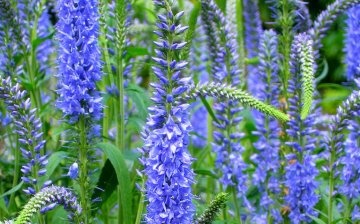
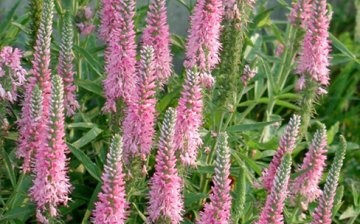
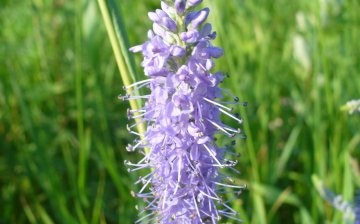
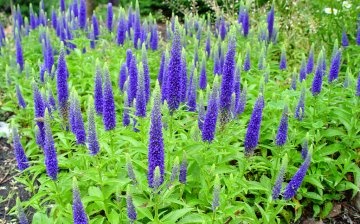
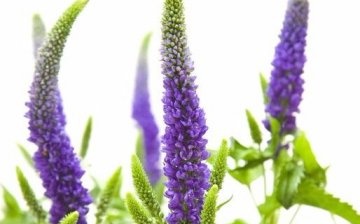





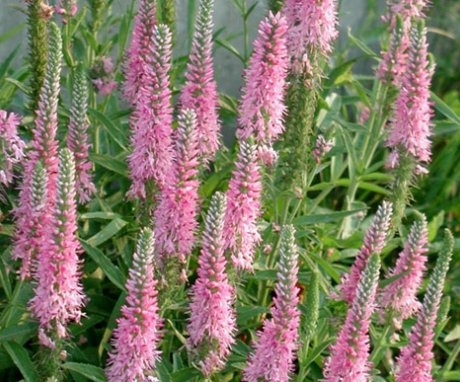

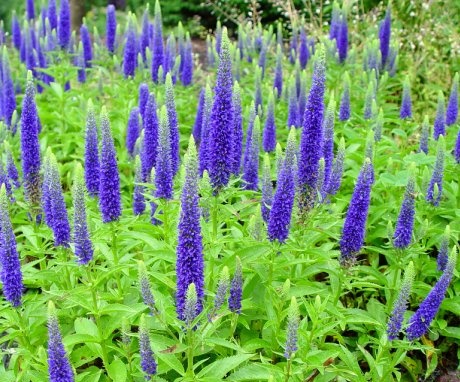
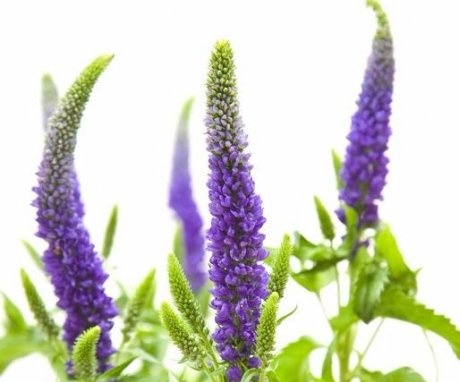
A very beautiful plant, with daisies, of which there are many in our garden, it will look perfect. In addition, Veronica can be used for various teas, for the prevention of colds.
For the decoration of your garden, you can find a worthy use for it somewhere in the corner, but as I understand it, you don't really have to rely on splendor here and you need to understand this well when planting.